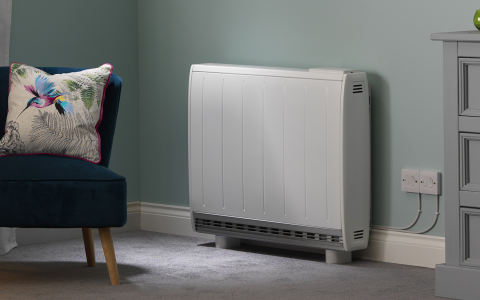Buying guide
Cooling Fans
Things to consider
When it comes to hot days and humid nights, a cooling fan can provide instant comfort for the whole family. But with such a wide range to choose from, how do you know which fan is right for you? Don’t sweat it - this handy guide will help to ensure you pick the right fan for you, your home and your budget.
Where are you going to use it?
Deciding where you are going to be using your fan will help you figure out what style and features you will need. If you require a fan to help you cool a larger room, then floor or tower fans are ideal due to their larger size and reach, whereas if you require a fan to simply cool yourself, then a desktop fan may be best. It is also worth considering the portability of the fans, if you plan on moving it from room to room then make sure you pick one that has an integrated carry handle and differing fan speeds that will suit multiple room sizes
What style do you need?
Cooling fans have come a long way from the basic three blade ones we’re used to. Now with styles to perfectly suit your application, you can choose between wide reaching floor fans, small desktop fans for personal cooling or tower fans which are great for all round use.
Floor Fans
Floor fans, in particular the Dimplex 360 fan, have a wide fan reach making them ideal for larger rooms. They are also lighter in weight, making them easily portable around the home.
Desktop Fans
With a small, compact footprint, desktop fans are ideal for use on desks or bedside tables, providing personal cooling.
Tower Fans
Tower fans are a style of floor fan. Usually slim line and sleek in design, these fans will fit seamlessly into their surroundings. They are particularly useful for bedrooms, being the appropriate height for fanning you whilst in bed.
What additional features would you like?
Once you’ve decided where you are going to be using your cooling fan, it’s important to consider any additional features you’d like it to offer, such as oscillation (rotation) functions and differing wind modes and speeds. Most Dimplex fans come with three fan speeds, low, medium and high, and some come with eco, sleep and natural wind modes, ensuring maximum comfort for each application. Our premium tower fan, Ion Fresh even features a built in ioniser that discharges negative ions, these attach to positive ions and drop them out of the air to create a fresher environment. It also features three speed settings and three breeze modes, so you can find the perfect balance for your comfort.
What controls would you like?
All Dimplex fans have been designed with ease of use in mind so have clear LCD and LED displays. Most of our fans also come with a remote control allowing you to use your fan from the comfort of your seat. As an added feature, some cooling fans incorporate a runback timer, meaning you can set your fan to run for a certain period of time before turning itself off.
What about safety?
If you have children or pets in the home, then it is worth choosing a fan that has good stability with a wide base and enclosed fan blades. This will ensure the fan won’t be easily knocked over, fur can’t get caught, and saves little fingers from harm. Cooling fans from Dimplex also come with a one year warranty as a minimum, offering added peace of mind.

10 Point Plan: Green growth brings great opportunity for the electrical industry
Boris Johnson has launched his Ten Point Plan for a green industrial revolution. It outlines how committed the government is in making the UK a world leader in sustainability, and creates a number of positive opportunities for the electrical industry.

The CCC has suggested phasing out the installation of fossil fuel boilers by 2033 - but is this ambitious enough?
The Climate Change Committee recently released their proposed target for the Sixth Carbon Budget; suggesting a challenging 78% emissions reduction beyond 1990 levels. To achieve this, they have strongly recommended the introduction of a 2033 law banning the installation of fossil fuel boilers – but is this ambitious enough and what are the alternatives?

Flexibility or snap: How bending energy demand can reduce need for expensive investment
Ofgem’s consultation on their Forward Work Programme to build a fairer and greener energy system in Great Britain closes today. They have recommended demand shifting, storage, and interconnection as measures to “dampen the growth in peak demand” brought on by the electrification of heat, transport and services. Ofgem argue that reducing the peak electricity demand through a flexible energy system could save £5 billion per-annum, as there will be less need for investment in expensive network upgrades and plant generation.











